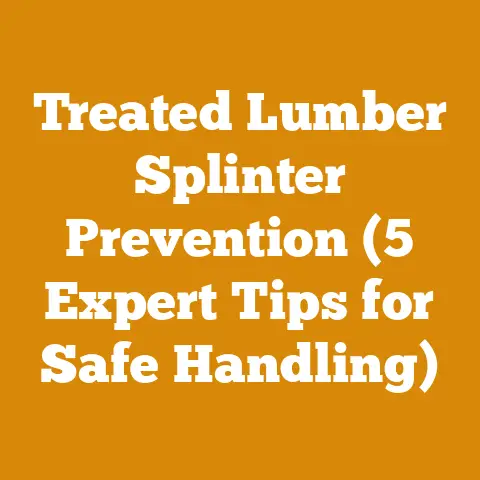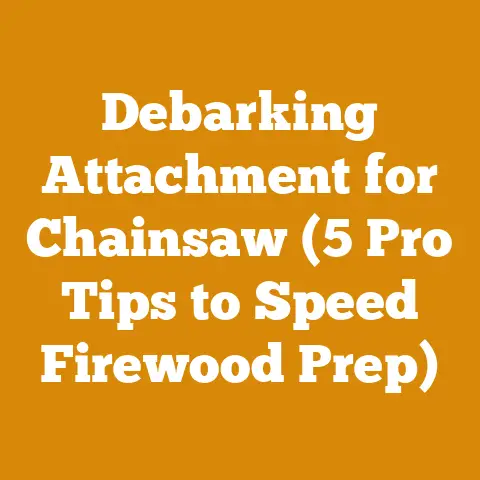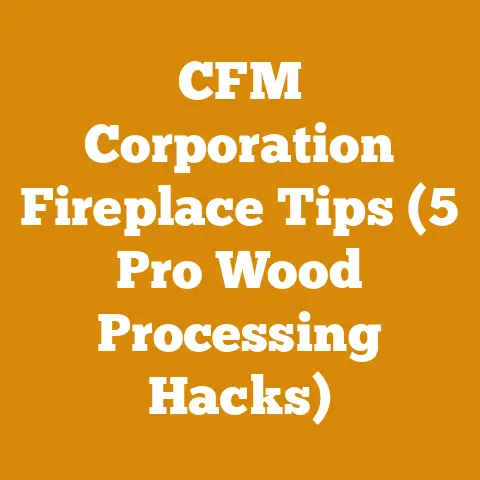Stihl Hedge Trimmer Grease Tips (5 Pro Secrets for Gear Care)
I’ve seen it time and again – a hedge trimmer, once a vibrant workhorse, reduced to a stuttering, ineffective tool. The culprit? Neglect. Specifically, neglecting the gears that power its blades. It’s easy to overlook, hidden away as they are, but proper lubrication is the lifeblood of your Stihl hedge trimmer. Let’s delve into the world of hedge trimmer grease and gear care, transforming you from a casual user into a proactive guardian of your equipment. I’ll share my pro secrets, gleaned from years of experience, to keep your Stihl hedge trimmer running smoothly for years to come.
Stihl Hedge Trimmer Grease Tips: 5 Pro Secrets for Gear Care
Understanding the importance of gear maintenance is the first step. Next, it’s about implementing a practical routine. Let’s explore how to properly grease your Stihl hedge trimmer and extend its lifespan.
Understanding Your Stihl Hedge Trimmer’s Gear System
Before diving into the “how,” let’s understand the “why.” The gears within your Stihl hedge trimmer are responsible for translating the engine’s power into the reciprocating motion of the blades. These gears operate under significant stress, subjected to high speeds and friction. Without adequate lubrication, this friction leads to:
- Increased wear and tear: Gears grind against each other, gradually eroding their surfaces.
- Overheating: Friction generates heat, which can damage the gears and surrounding components.
- Reduced performance: The trimmer struggles to cut efficiently, requiring more effort and fuel.
- Premature failure: Ultimately, the gears can seize or break, rendering the trimmer unusable.
Think of it like this: your hedge trimmer’s gears are like the engine of a car. You wouldn’t run a car without oil, would you? The same principle applies here. Proper lubrication is essential for smooth operation and longevity. I’ve personally seen gearboxes completely seize due to lack of grease. The repair costs far outweigh the simple preventative measure of regular greasing.
Takeaway: Understanding the importance of gear lubrication is the foundation for proactive maintenance.
Pro Secret #1: Choosing the Right Grease
Not all grease is created equal. Using the wrong type of grease can be as detrimental as using no grease at all. Stihl recommends specific greases formulated for their hedge trimmers. Why? Because these greases possess properties tailored to the unique demands of the gear system:
- High Viscosity: Provides a thick, protective layer that adheres to the gears even under high speeds and temperatures.
- Extreme Pressure (EP) Additives: Prevents metal-to-metal contact under heavy loads, minimizing wear.
- Water Resistance: Protects against corrosion and washout, crucial for outdoor use.
- Compatibility: Designed to work with the materials used in Stihl hedge trimmer gearboxes (typically steel and plastic).
Stihl’s Recommended Greases:
- Stihl Special Grease: A lithium-based grease specifically formulated for Stihl hedge trimmers. This is often the go-to recommendation.
- Stihl Universal Grease: A multi-purpose grease that can be used in various applications, including hedge trimmers. However, for optimal performance, the Special Grease is preferred.
Alternatives (Use with Caution):
If you can’t find Stihl’s specific greases, look for a high-quality lithium-based grease with EP additives and good water resistance. Ensure it’s compatible with plastic components if your trimmer’s gearbox contains them. I always err on the side of caution and stick with the manufacturer’s recommendations. It’s a small price to pay for peace of mind and prolonged equipment life.
Important Note: Avoid using general-purpose automotive grease. These greases often lack the necessary properties for high-speed gear systems and may even damage plastic components.
Actionable Tip: Check your Stihl hedge trimmer’s owner’s manual for the recommended grease type.
Takeaway: Use the correct type of grease to ensure optimal lubrication and prevent damage.
Pro Secret #2: Establishing a Regular Greasing Schedule
How often should you grease your Stihl hedge trimmer? The answer depends on several factors:
- Frequency of Use: The more you use your trimmer, the more often you need to grease it.
- Operating Conditions: Dusty or wet conditions can accelerate grease degradation, requiring more frequent greasing.
- Grease Type: Some greases last longer than others.
General Guidelines:
- Light Use (Occasional Trimming): Grease every 25 hours of operation or at least once a year.
- Moderate Use (Regular Maintenance): Grease every 10-15 hours of operation or every few months.
- Heavy Use (Professional Landscaping): Grease daily or every 8 hours of operation.
My Personal Schedule:
I maintain a fleet of Stihl hedge trimmers for my landscaping business. I grease them every two weeks during the peak season (spring and summer) and once a month during the off-season. I also give them a quick shot of grease after particularly long or demanding jobs. I keep a logbook of maintenance tasks for each trimmer. This helps me stay organized and ensures that no trimmer is neglected.
The “Feel” Test:
Don’t rely solely on a schedule. Pay attention to how your trimmer is performing. If it sounds louder than usual, feels rougher, or seems to be struggling, it’s likely time for a grease top-up.
Actionable Tip: Create a maintenance log for your Stihl hedge trimmer and track greasing intervals.
Takeaway: Establish a regular greasing schedule based on usage and operating conditions.
Pro Secret #3: The Correct Greasing Procedure (Step-by-Step)
Now, let’s get our hands dirty. Here’s a detailed, step-by-step guide on how to grease your Stihl hedge trimmer:
Tools and Materials:
- Stihl Special Grease or equivalent
- Grease gun (a small, hand-operated grease gun is ideal)
- Clean rag
- Wrench or screwdriver (if needed to access the grease fitting)
- Gloves (optional, but recommended)
Step 1: Safety First!
- Stop the engine and allow it to cool completely. Never attempt to grease a running or hot engine.
- Disconnect the spark plug wire. This prevents accidental starting.
- Wear gloves to protect your hands from grease.
Step 2: Locate the Grease Fitting(s)
- Consult your Stihl hedge trimmer’s owner’s manual to identify the location of the grease fitting(s). These are typically located on the gearbox housing, near the blade mechanism. Some models may have multiple grease fittings.
- If the fitting is covered by a cap or guard, remove it.
Step 3: Clean the Grease Fitting
- Use a clean rag to wipe away any dirt, debris, or old grease from the fitting. This prevents contaminants from entering the gearbox.
Step 4: Attach the Grease Gun
- Attach the nozzle of the grease gun to the grease fitting. Ensure a tight, secure connection. You should feel it “click” into place.
Step 5: Inject the Grease
- Slowly and steadily pump the grease gun handle, injecting grease into the gearbox. Watch for grease to start oozing out from around the blade mechanism or a designated vent hole.
- Do not over-grease! Over-greasing can damage seals and force grease into unwanted areas. Stop pumping as soon as you see fresh grease emerging.
Step 6: Remove the Grease Gun
- Carefully detach the grease gun nozzle from the fitting.
Step 7: Wipe Away Excess Grease
- Use a clean rag to wipe away any excess grease from around the fitting and the blade mechanism.
Step 8: Replace the Cap or Guard
- If applicable, replace the cap or guard over the grease fitting.
Step 9: Reconnect the Spark Plug Wire
- Reconnect the spark plug wire to the spark plug.
Step 10: Test the Trimmer
- Start the trimmer and run it briefly to distribute the new grease throughout the gear system. Listen for any unusual noises.
Visual Inspection:
While you’re greasing, take the opportunity to visually inspect the blades and gearbox for any signs of damage or wear. Look for:
- Cracked or broken blades
- Loose screws or bolts
- Leaks around the gearbox
- Excessive play in the blade mechanism
Addressing these issues early can prevent more serious problems down the road.
My Personal Tip: I always keep a small container of degreaser and a toothbrush handy for cleaning grease fittings. This ensures that the fitting is free of debris before I attach the grease gun.
Actionable Tip: Practice the greasing procedure on an old or unused hedge trimmer to get a feel for it before working on your primary tool.
Takeaway: Follow the correct greasing procedure to ensure proper lubrication and prevent damage.
Pro Secret #4: Dealing with Common Greasing Challenges
Even with the best intentions, you might encounter some challenges when greasing your Stihl hedge trimmer. Here are some common issues and how to address them:
- Grease Gun Won’t Attach: The grease gun nozzle may not be compatible with the grease fitting. Try a different nozzle or adapter. Also, ensure the fitting is clean and free of debris.
- Grease Won’t Go In: The grease fitting may be clogged. Use a small wire or needle to clear the obstruction. Alternatively, the gearbox may be already full of grease.
- Grease Leaks Out Immediately: The seals around the gearbox may be damaged or worn. This requires replacing the seals, which is best left to a qualified technician.
- No Grease Fitting: Some older models may not have a grease fitting. In this case, you’ll need to disassemble the gearbox to apply grease directly to the gears. This is a more complex procedure and should only be attempted by experienced individuals.
Troubleshooting Example:
I once had a trimmer where the grease gun would attach, but no grease would go in. I tried everything – cleaning the fitting, using a different nozzle, even trying a different grease gun. Finally, I realized that the grease itself had hardened inside the grease gun cartridge. I replaced the cartridge, and the problem was solved.
Preventive Measures:
- Store your grease gun and grease cartridges in a cool, dry place to prevent the grease from hardening or separating.
- Regularly inspect the grease gun for damage or wear.
- Use a high-quality grease gun that provides a consistent and reliable flow of grease.
Actionable Tip: Keep a basic toolkit handy with spare grease gun nozzles, adapters, and cleaning supplies.
Takeaway: Be prepared to troubleshoot common greasing challenges and take preventive measures to avoid them.
- Regular Cleaning: Keep the gearbox and surrounding area clean of debris. Dirt and grime can accelerate wear and tear.
- Blade Maintenance: Sharp blades reduce the strain on the gearbox. Sharpen or replace blades as needed. Dull blades force the gears to work harder, increasing friction and heat.
- Proper Storage: Store your trimmer in a dry, protected location. This prevents corrosion and damage to the gearbox.
- Avoid Overloading: Don’t try to cut branches that are too thick for your trimmer. This can overload the gearbox and cause damage.
- Professional Servicing: Schedule regular professional servicing for your trimmer. A qualified technician can inspect the gearbox, replace worn parts, and ensure that it’s properly lubricated.
Case Study:
I had a customer who consistently overloaded his hedge trimmer by trying to cut thick branches. He neglected blade maintenance and rarely greased the gearbox. As a result, the gearbox failed prematurely, requiring a costly repair. By contrast, another customer who followed my recommended maintenance schedule had his trimmer running smoothly for over a decade.
The Importance of Blade Sharpening:
I cannot stress enough the importance of sharp blades. Dull blades not only make trimming more difficult, but they also put excessive strain on the gearbox. Think of it like trying to cut a tomato with a butter knife versus a sharp knife. The sharp knife requires less force and effort, resulting in a cleaner cut. The same principle applies to hedge trimmers.
Bonus Tip: Disposing of Used Grease Responsibly
Used grease can be harmful to the environment. Never dispose of it down the drain or in the trash. Instead, collect it in a sealed container and take it to a local recycling center or hazardous waste disposal facility. Many auto parts stores also accept used grease for recycling.
Final Thoughts: The Value of Proactive Maintenance
Maintaining your Stihl hedge trimmer’s gearbox is an investment in its longevity and performance. By following these pro secrets, you can extend the life of your trimmer, reduce repair costs, and enjoy years of reliable service. Remember, a little preventative maintenance goes a long way. I’ve seen firsthand the difference it makes. So, take the time to properly grease your hedge trimmer, and it will reward you with years of smooth, efficient trimming.






